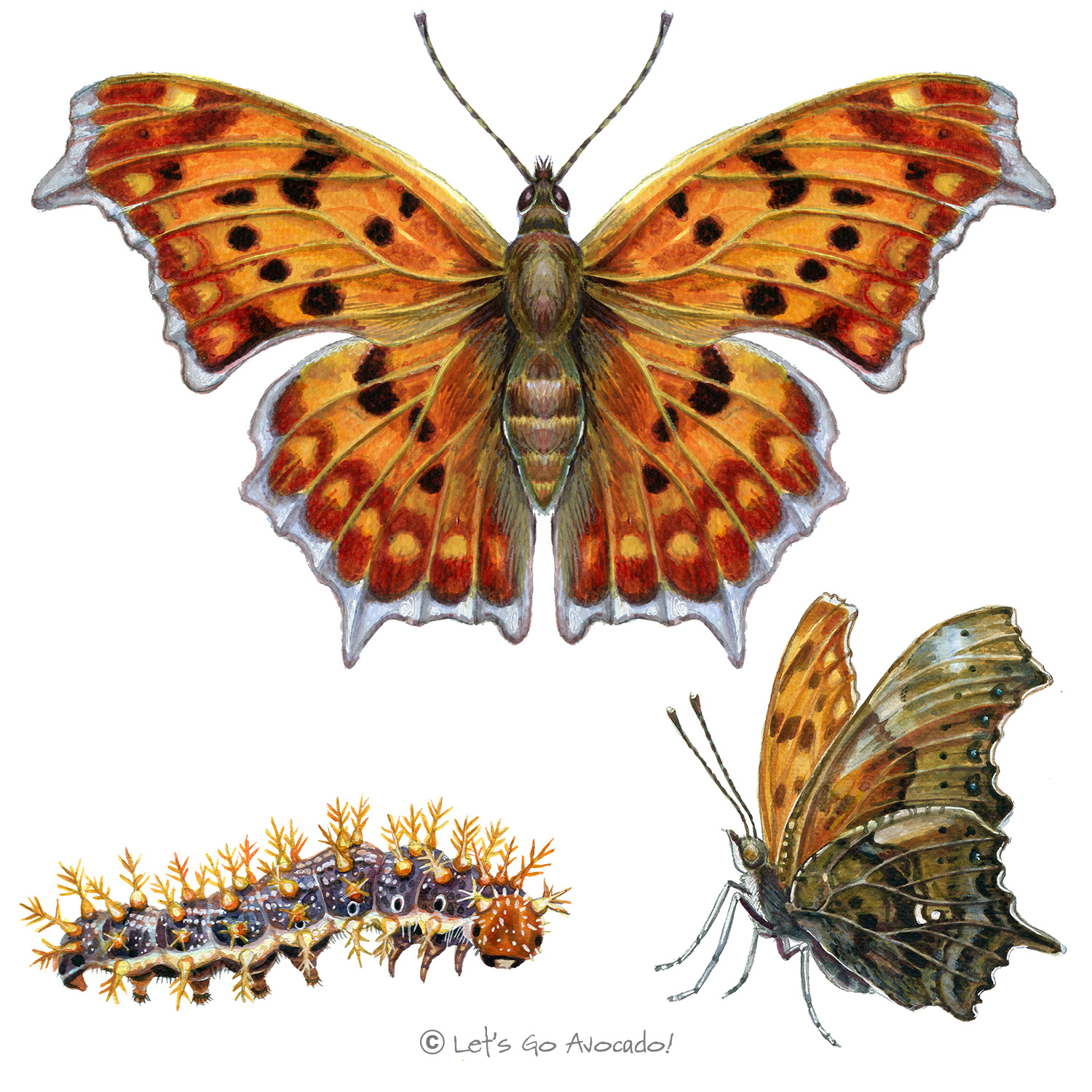

Question Mark
Polygonia interrogationis
This page may contain affiliate links.
Read our disclosure and privacy policy here.
The Question Mark butterfly is a member of the Nymphalidae family and is known for its unique wing markings and intriguing name. With striking colors and patterns, it is easily recognizable among butterfly enthusiasts and often sparks interest due to its distinctive punctuation-like mark on the underside of its wing.
Question Mark
Common Name
Question Mark
Latin Name
Polygonia interrogationis
Distribution
This butterfly is found mainly in North America, ranging from southern Canada to central Mexico. It is especially prevalent in the eastern United States.
Appearance
The upper side of the wings is bright orange with black spots, resembling the coloration of many other nymphalid butterflies. The underside is more cryptic, with a combination of browns and tans, resembling a dead leaf. The most distinctive feature is a small white mark on the underside of the hindwing, which looks like a question mark, thus the butterfly’s name.
Size
The wingspan of the Question Mark butterfly ranges between 4.5 to 7.5 cm. Caterpillars can reach lengths of about 5 cm.
Habitat
They can be found in a variety of habitats, including wooded areas, parks, gardens, and edges of forests.
Diet
Caterpillar: Primarily feeds on nettles, but they also consume elm, hackberry, and false nettle.
Butterfly: Adult butterflies prefer rotting fruit, tree sap, dung, and carrion. However, they will also nectar on flowers, especially when other food sources are not available. They are particularly drawn to flowers like milkweed, asters, and sweet pepperbush.
Lifecycle
Adhering to the general butterfly progression, its lifecycle comprises: egg → caterpillar (larva) → chrysalis (pupa) → adult butterfly.
Defense Mechanisms
Caterpillar: Their coloration allows them to blend into their surroundings, providing camouflage from potential predators.
Butterfly: The cryptic underwing coloration allows the butterfly to blend in when it’s resting, making it resemble a dried leaf. This camouflaging technique is crucial for its survival, especially during hibernationHibernation is a remarkable survival strategy used by some animals to endure harsh winter conditions. During hibernation, these animals enter a deep, prolonged state of reduced activity, characterized by a significant drop in metabolic processes, including heart rate and body temperature, allowing them to conserve energy and survive through the challenging cold months.. The bright upperwing coloration can also serve as a warning or distraction to potential predators.
Ecological Importance
Beyond their role as pollinators when they nectar on flowers, they are a part of the food chain, serving as prey for various birds and other predators. Their larvae also play a role in controlling the growth of their host plants.
ConservationThe act of protecting and preserving natural resources and the environment. Conservation efforts are important to protect beavers and their habitats. Status
The Question Mark butterfly is not considered endangered or threatened. It is relatively common within its range.

There’s a lot to explore right where we are, in our own neighborhoods and backyards! Join us while we get off the couch and explore the everyday wonders of nature, science, space, engineering, art, and anything else we stumble upon during on our adventures.







